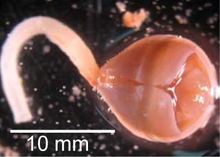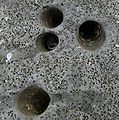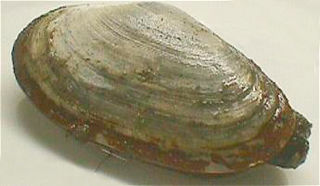
Mya is a genus of saltwater clams, marine bivalve molluscs in the family Myidae. They are widespread and abundant in northern waters. Commonly known as Ipswich clams, soft-shell clam or steamers, they are routinely used as a food source for humans.

Lambis is a genus of large sea snails sometimes known as spider conchs, marine gastropod mollusks in the family Strombidae, the true conch family.

Myidae, common name the softshell clams, is a taxonomic family of marine bivalve molluscs in the order Myida.
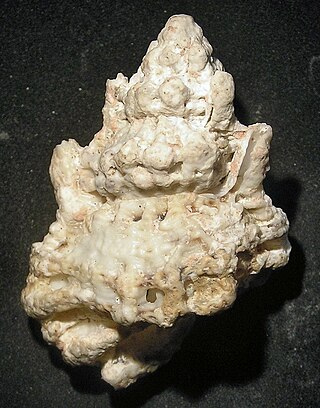
Bursa is a genus of large sea snails, marine gastropod molluscs in the family Bursidae, the frog snails or frog shells.

Mya truncata, common name the blunt gaper or truncate softshell, is a species of edible saltwater clam, a marine bivalve mollusk in the family Myidae.

Ficus is a genus of large sea snails, marine gastropod mollusks in the family Ficidae, the fig shells.

Bullia is a genus of sea snails, marine gastropod mollusks in the family Nassariidae, the Nassa mud snails or dog whelks.
In 1758, in the 10th edition of Systema Naturae, the Swedish scientist and taxonomist Carl Linnaeus described the class "Vermes" as:
Animals of slow motion, soft substance, able to increase their bulk and restore parts which have been destroyed, extremely tenacious of life, and the inhabitants of moist places. Many of them are without a distinct head, and most of them without feet. They are principally distinguished by their tentacles. By the Ancients they were not improperly called imperfect animals, as being destitute of ears, nose, head, eyes and legs; and are therefore totally distinct from Insects.

Lutraria is a genus of medium-sized marine bivalve mollusks or clams, commonly known as otter shells.

Cyrtopleura costata, or the angel wing clam, is a bivalve mollusc in the family Pholadidae. It is found in shallow parts of the northwest Atlantic and also in the North Sea of Scotland coastline and west coast of the Adriatic Sea by a remote area in the Marche region in central Italy, living in the seabed, where it digs its burrows on a very slow revolving movement for years through soft sand and mud always to a max depth of 8ft but always below 3 feet (0.91 m) at the lowest tide.

Pholas is a taxonomic genus of marine bivalve molluscs in the subfamily Pholadinae of the family Pholadidae.

Pholadidea is a taxonomic genus of marine bivalve molluscs in the subfamily Martesiinae of the family Pholadidae. Most members of Pholididea bore into shale, soft rock and coral for shelter, with the exception of Pholididea (Hatasia) wiffenae, which is a wood-borer.
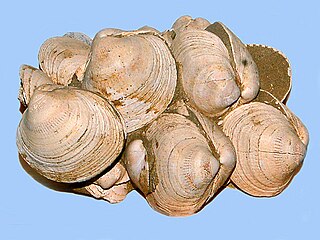
Glycymeris, common name the bittersweet clams, is a genus of saltwater clams, marine bivalve molluscs in the family Glycymerididae.

Pholad borings are tubular burrows in firm clay and soft rock that have been created by bivalve molluscs in the family Pholadidae. The common names of clams in this family are "pholads", "piddocks", and "angel wings"; the latter because their shells are white, elongated and tend to be shaped like a wing and have sculpture somewhat reminiscent of a wing.

Callista is a genus of saltwater clams, marine, bivalve molluscs in the family Veneridae, the venus clams.
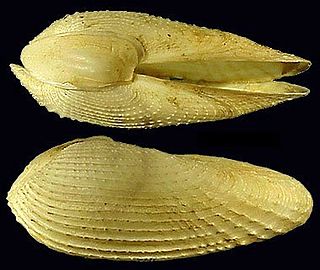
Barnea is a genus of bivalves belonging to the family Pholadidae.

Cyrtopleura is a genus of bivalves belonging to the family Pholadidae.
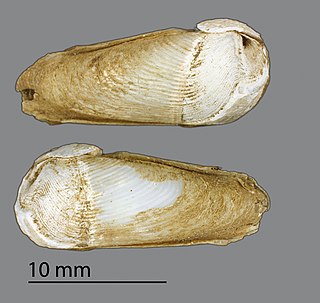
Martesia is a genus of bivalves belonging to the family Pholadidae.


